Biophilia means “love of nature”. Biophilic design in architecture is how architects use nature in architectural spaces to contribute to the health and well-being of their inhabitants. By providing direct access and views of nature and using building materials and features that mimic and respect the surrounding ecosystem, architects create spaces that appeal to our innate fascination with the natural environment.
Have you ever noticed how a stroll through a lush, green park instantly lifts your spirits? Or perhaps you’ve marvelled at the tranquillity of a room filled with sunlight and potted plants? Well, there’s a reason for that!
Welcome to the world of biophilic design, where the power of nature meets the art of architecture. From enhancing recovery rates in hospitals to boosting cognitive performance in schools and productivity in offices, biophilic design is more than just a trend – it’s a transformative approach that brings the outdoors in.
Join us as we delve into the fascinating realm of “The Role of Biophilic Design in Architecture” and discover how it’s reshaping our built environments for the better.
What is Biophilic Design in Architecture?
Biophilic design in architecture is all about bringing nature into our built environments to make them more pleasant and healthy. It’s like inviting the great outdoors indoors! This means using natural elements like plants, natural light, and even materials like wood and stone to create spaces that connect us to nature.
Imagine working or living in a place filled with greenery, where the sun’s warmth streams in, and you’re surrounded by the calming presence of nature. That’s the magic of biophilic design. It’s not just about making spaces look pretty; it’s about making us feel happier, less stressed, and more connected to the natural world, all while we’re inside a building. So, it’s like a win-win – great for our well-being and our love for nature!
How Biophilic Design Harnesses Our Connection to Nature?
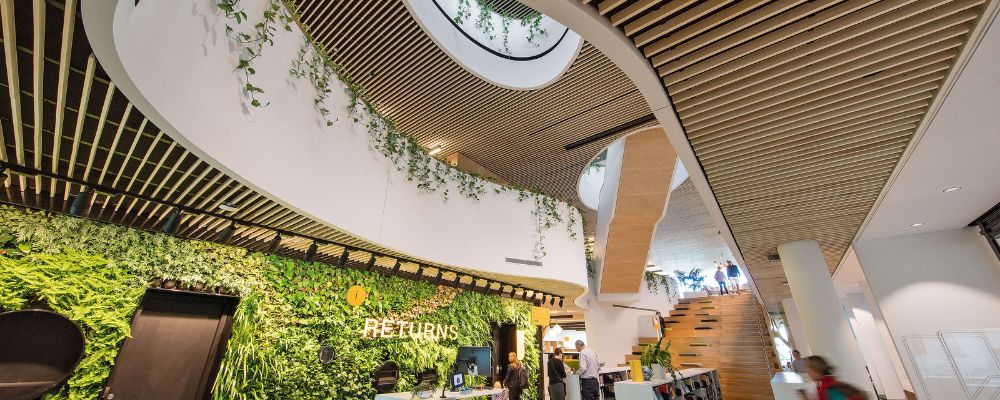
Humans have an instinctive connection with nature, so we prefer spaces that reflect the characteristics of the outdoor environment or provide views and even access to beautiful areas, plants or water features. It makes sense when you feel better. There are several tactics of architects that are used when incorporating biophilic design principles into their projects.
Access and view of nature
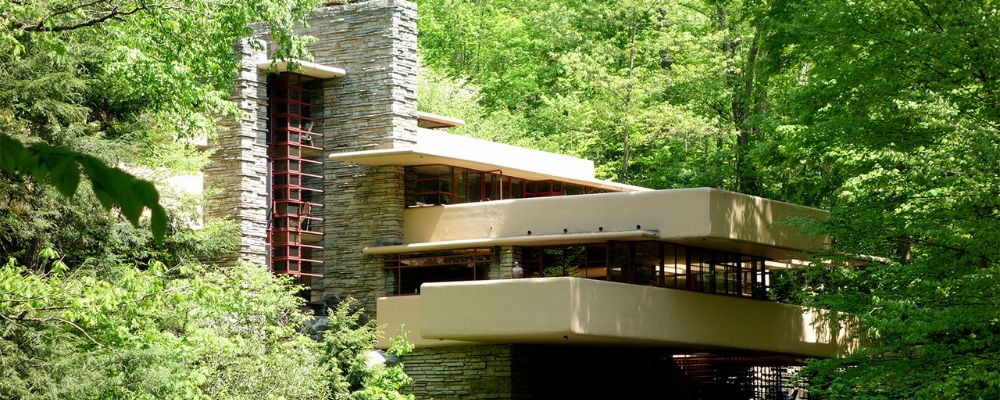
Some buildings are positioned to offer sweeping views of the sea from their windows, or plenty of trees in the sweeping landscape, while others are not. Urban and mostly industrial places. When designing, architects may design courtyard spaces that have trees and other things. Plants that provide natural views and access to nature for residents.
Improving air quality and ventilation
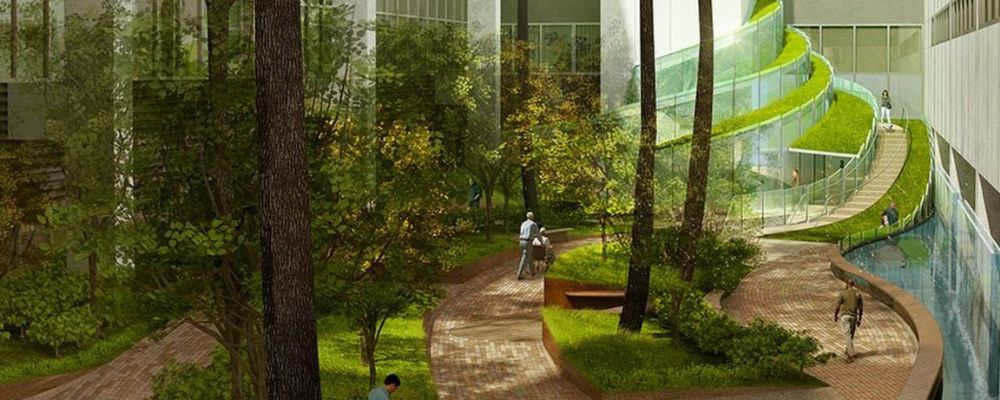
People who spend most of their day in an office or other buildings usually take a break to “breathe fresh air”. Architects use biophilic design features, operable windows, overhead revolving doors for outdoor areas, solar chimneys that use chimney effects to move air, or HVAC systems that promote healthy air exchange and meet this need.
Natural light
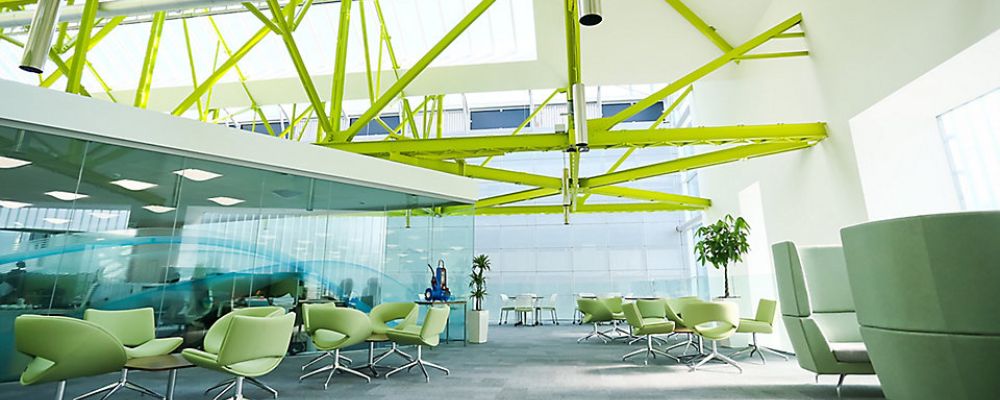
Access to natural light is the main factor in the well-being of building residents. Too much light can lead to unpleasant glare, and a lack of daylight can create dimly lit spaces. Shading devices, orientation and window-to-wall ratio should all be considered in building design to optimise sunlight. However, daylight should not be limited to this.
Noise

Improved Acoustics Noise from HVAC systems, other mechanical equipment, elevators, and building occupants can be managed through design features such as acoustic panels. Biophilic solutions to acoustic problems include indoor plants and water features that strategically help mask unwanted sounds.
Green walls and roof
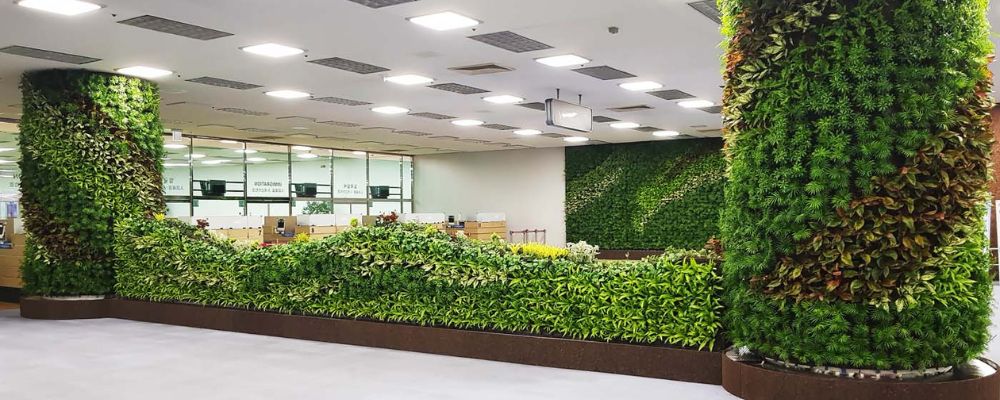
Green walls and roofs enhance the environment and also add visual opportunities to connect with nature. Placing a green facade over an existing fence, or placing a “living wall” of plants, can help reduce the urban heat island effect. During the warmer months, the green roof acts as a cooling mass and deflects sunlight. In cooler weather, insulation improves and reduces heating demand.
Natural materials and calm colours
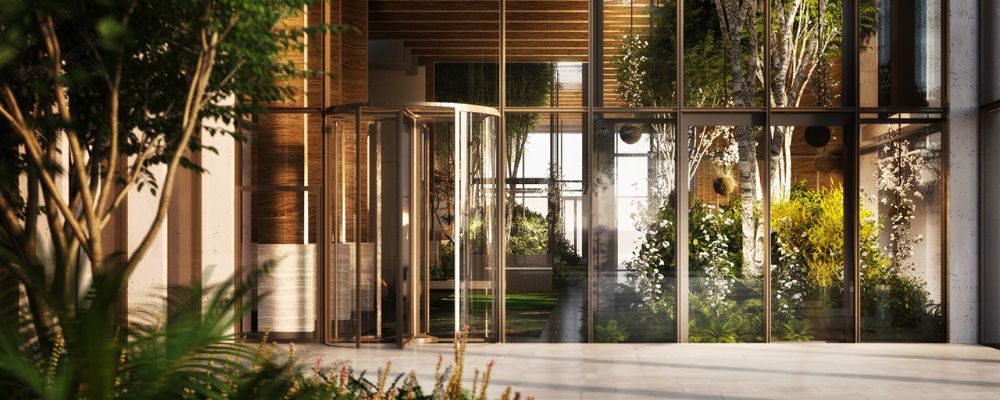
Material and finish play a big role in connecting the users of space with nature. Almost any finish offers an opportunity to reflect nature, including natural colours, landscape murals, carpet materials and patterns, wall panels carved with nature images, and natural woods.
We SkyDec Engineers will be there for you from the initial consultation to the final handover, we work with you every step of the way to bring your vision to life. Our expert designers take into consideration your unique style, needs, and budget to create a space that is both aesthetically pleasing and practical.
Here are enlisted Effects of Biophilic Design
The biophilic design creates a healthy and happy work environment
A growing body of research demonstrates the incredible benefits of biophilic design. Interventions that incorporate nature or mimic natural systems are associated with reduced stress, increased creativity, and accelerated recovery after illness. In the workplace, biophilic design tactics used in transforming offices increase employee well-being and provide other economic benefits such as reduced sick leave. Annual savings for businesses can reach $3,000 per employee.
Biophilia is not just a plant problem
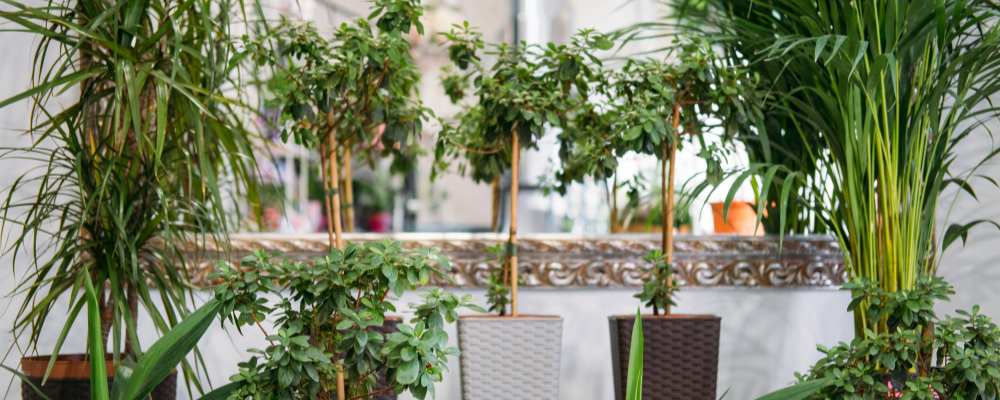
An obvious application of biophilia in indoor environment is the addition of plants, but that’s just the beginning. Human response to natural processes is much more advanced. For example, human responses are preferred to patterns and arrangements of biomorphs in nature. We understand that these patterns are not alive, but our brain associates them with living representations. Browning explains that this example involves the Fibonacci sequence. I’m here. The Fibonacci sequence is often found in nature in the form of leaves and spirals. This use of patterns and fractals in design is usually called biomimicry and is one of the holistic approaches to biophilic design.
Light is part of our rhythm
Maximizing natural light benefits people, as well as energy bills, but biophilic natural light interventions, combine diffuse to temporal changes. Lighting systems that change naturally or artificially throughout the day to mimic circadian rhythms connect people to the outdoors and, in essence, help maintain our natural 24-hour cycles. Visual comfort is also enhanced by the maximum use of natural light and changes during the day.
Our minds and body appreciate the presence of water

Interventions that add water to space have several health benefits, such as lowering blood pressure, lowering heart rate, and restoring memory. Experimental studies show that the presence of water increases the feeling of relaxation and is a general preference.
We can feel nature in the air
While in theory, it seems best to keep indoor conditions constant (for example, office temperature), studies show that students perform better in spaces with varying temperatures and airflow. Stimulating airflow has been found to wake people up and naturally improve focus and performance.
It is more logical to appeal to multiple senses
To more effectively reach people with a biophilic design, it’s best to target multisensory stimulation. Seeing nature is not without benefits, but if people can smell and hear nature, its positive effect will be more significant. The ability to smell plants, feel the flow of air and hear the sound of water are simple examples of these widespread interventions.
Counterfeiting nature is also effective
While the presence of authentic nature is much better at taking advantage of the physiological and psychological benefits of interior design, elements that mimic nature are not useless. Adding nature paintings and using biomorphic patterns also improves spatial understanding. When adding windows or completely renovating an existing space is simply not possible, the opportunity to imitate nature is a good option.
Conclusion
As we conclude our journey through “The Role of Biophilic Design in Architecture,” one thing becomes abundantly clear: nature has an extraordinary impact on our well-being, productivity, and overall quality of life. By integrating these principles into architectural masterpieces, we not only bring the beauty of the outdoors indoors but also foster a harmonious coexistence between us and our built environments.
So, whether you’re an architect, designer, or simply someone passionate about creating spaces that resonate with vitality, remember that biophilic design offers endless possibilities to enrich our lives through the seamless blending of nature and architecture. Join the green movement, and let the places around us be not just places but also places that inspire and refresh us.
Explore Your Ideas with SkyDec Engineers! Call us at +91 9818153338 for advice or book a free consultation to talk about making spaces more nature-friendly with biophilic interior design!
